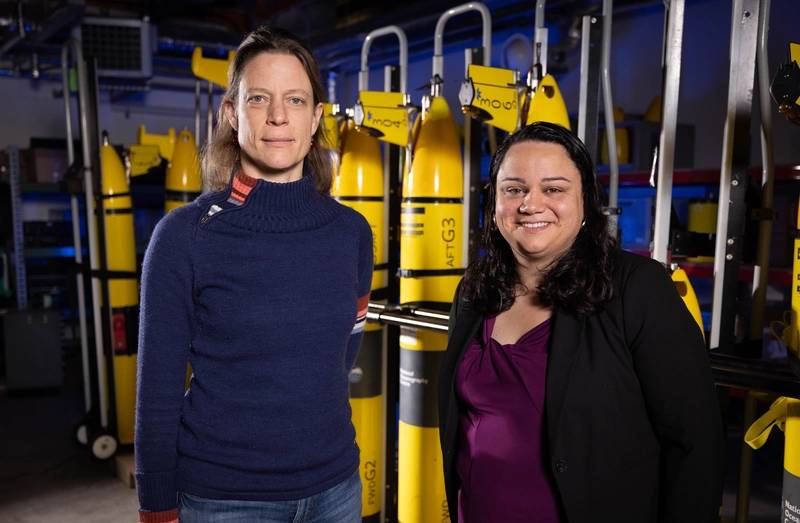Two new chief scientists have been appointed to the National Oceanography Centre’s (NOC) Marine Autonomous Robotic Systems (MARS) Group.
Dr Veerle Huvenne and Dr Filipa Carvalho will work to increase engagement with the marine science community, raise awareness of the robotics available to them and seek input on future technological developments.
These appointments into MARS mark a significant commitment by the UK’s National Marine Facilities (NMF), delivered by NOC, to strengthen links between science and engineering. A key element of NMF is the UK’s National Marine Equipment Pool, which MARS supports with its deep expertise on autonomous and robotic systems for use in marine research.
In their new roles, alongside their existing science commitments, Dr Huvenne and Dr Carvalho will work closely with the UK marine science sector to promote greater adoption and integration of MARS technology across the field.
They will also provide scientific insight for the advancement of MARS technologies, showcase accessibility and increase awareness of these technologies and foster a user community to share knowledge, expertise and best practices.
“We are excited to welcome Dr Huvenne and Dr Carvalho to the MARS team,” says Dr Alexander Phillips, head of MARS. “Their experience and dedication to marine science will play a pivotal role in bridging the gap between MARS innovations and the broader research community, driving forward our mission to enable cutting-edge marine research with autonomous technologies.”
Dr Huvenne is a marine geoscientist with more than 20 years of experience in the study of complex deep-sea environments such as cold-water coral reefs, submarine canyons, hydrothermal vents or seamounts. She is currently Associate Head of Ocean BioGeosciences at NOC.
Dr Carvalho is an oceanographer interested in biophysical interactions and the biological carbon pump and uses data from underwater gliders as well as other autonomous platforms, remote sensing and shipboard oceanographic data in her work.

